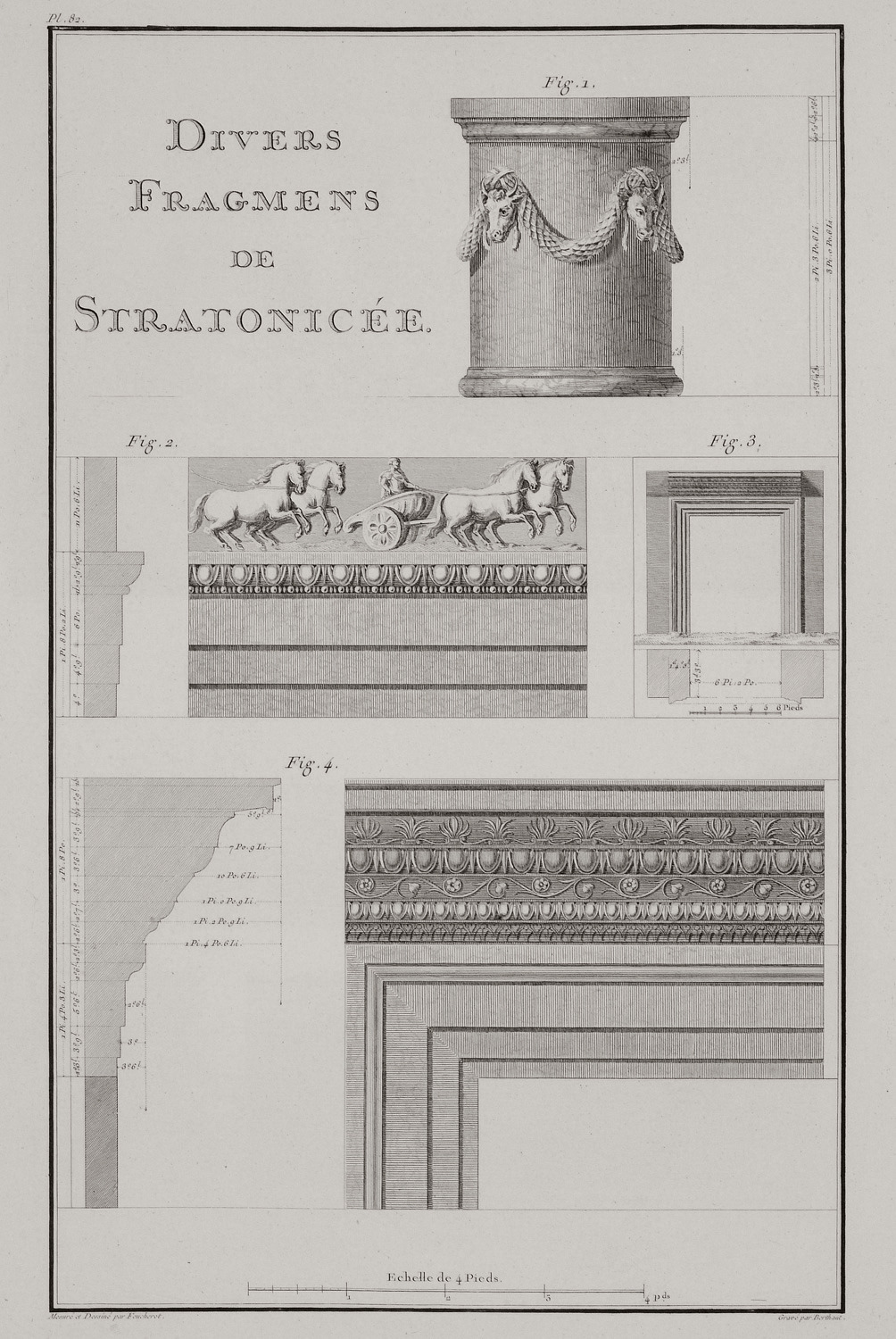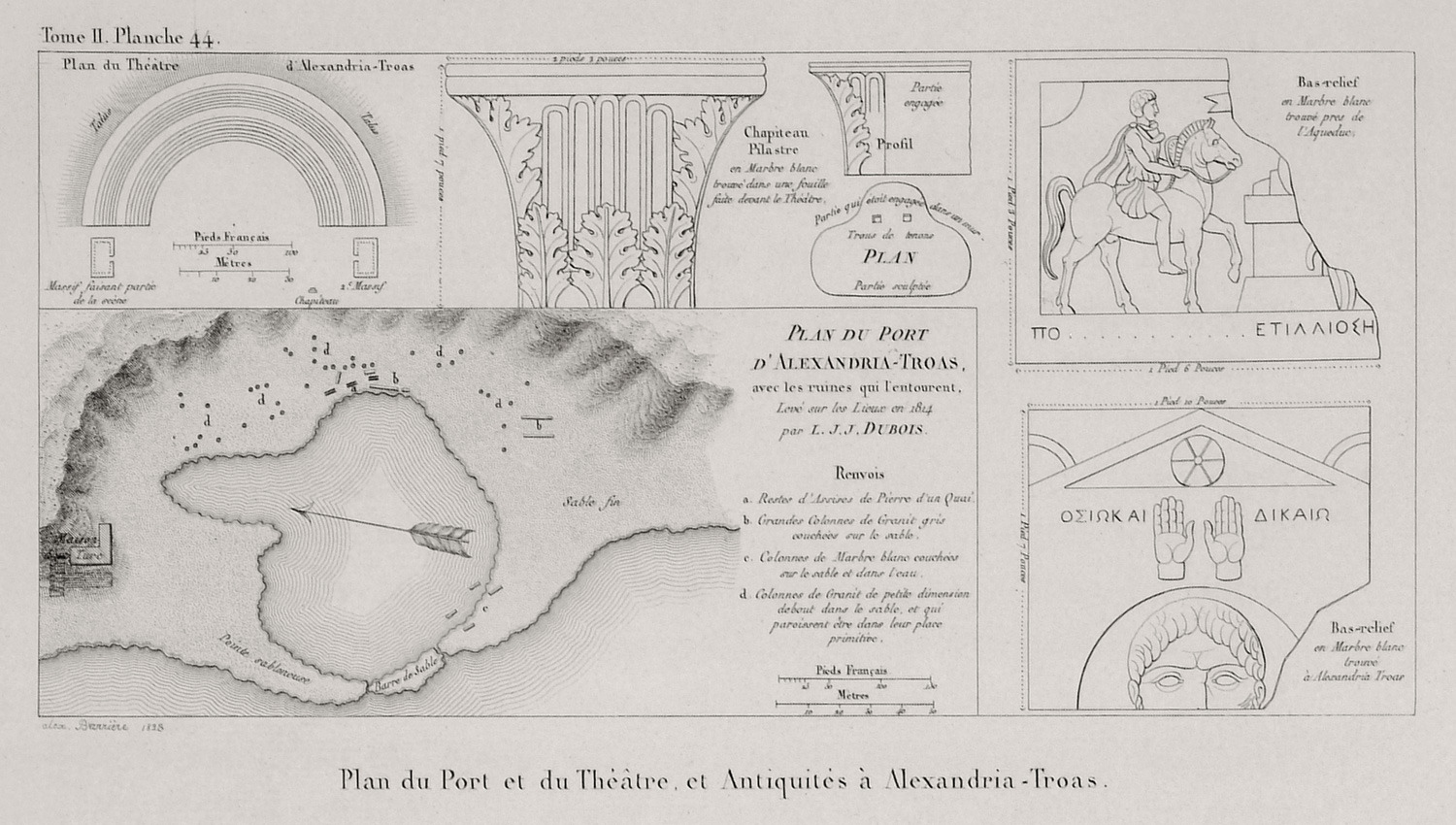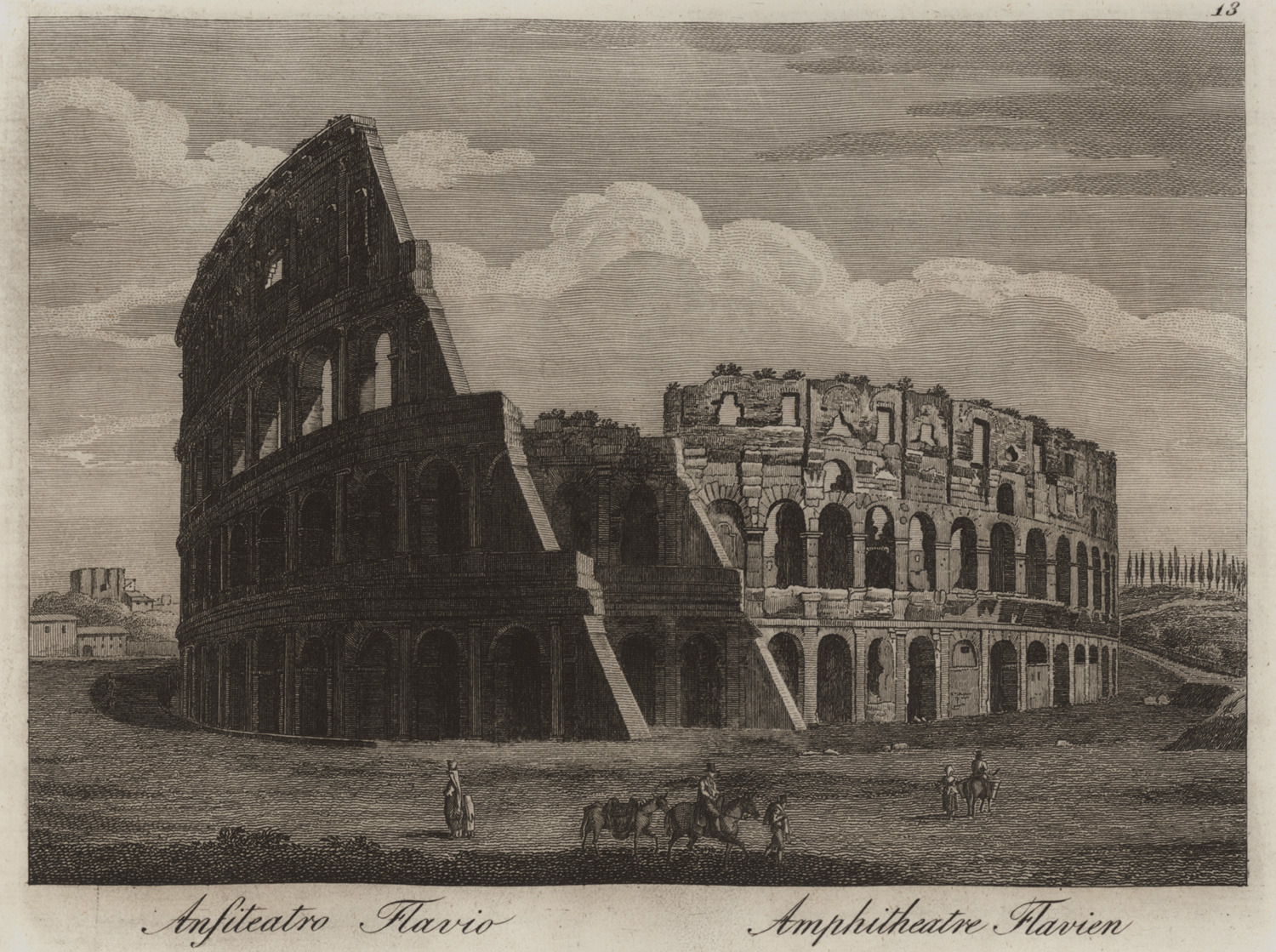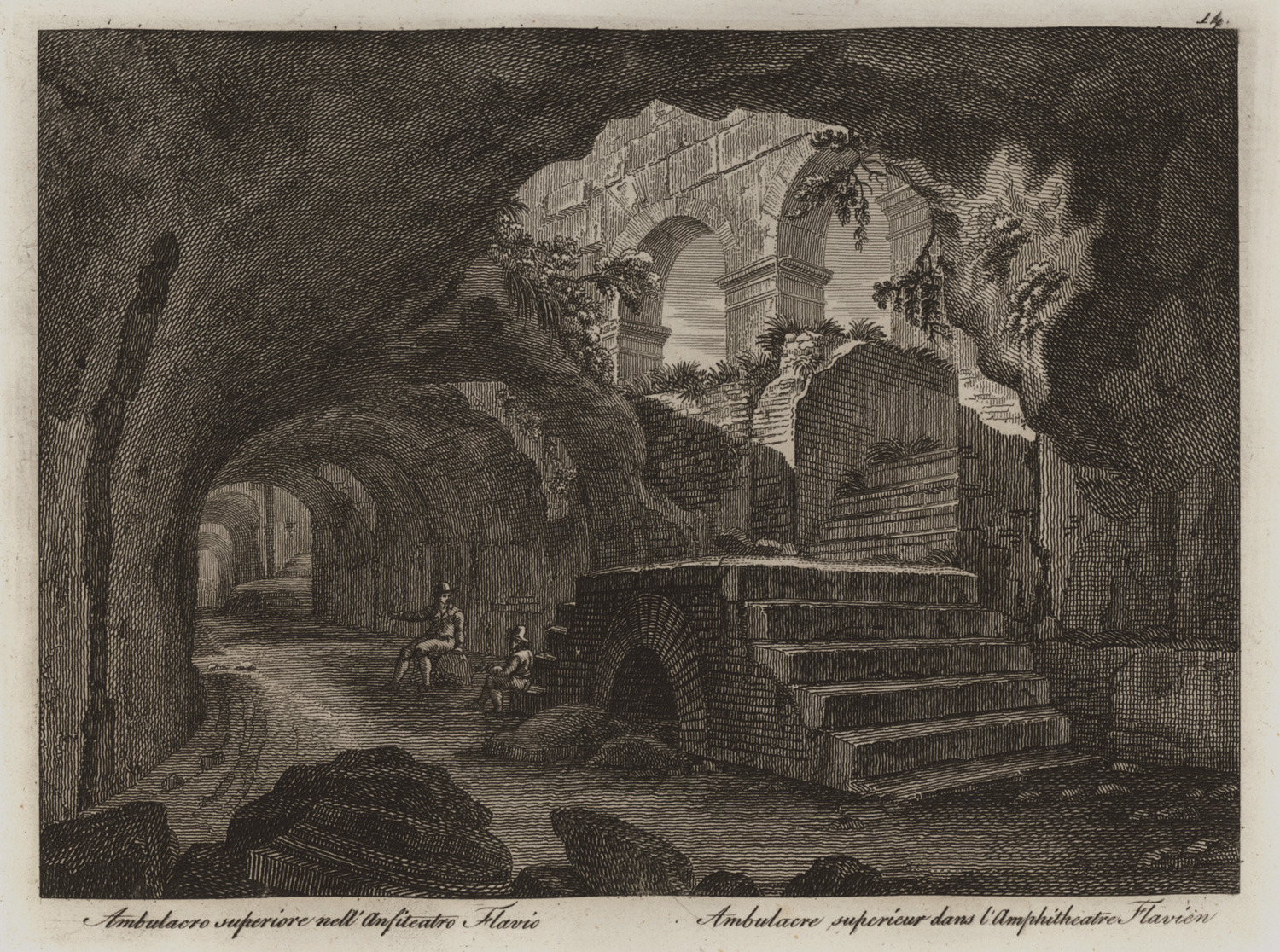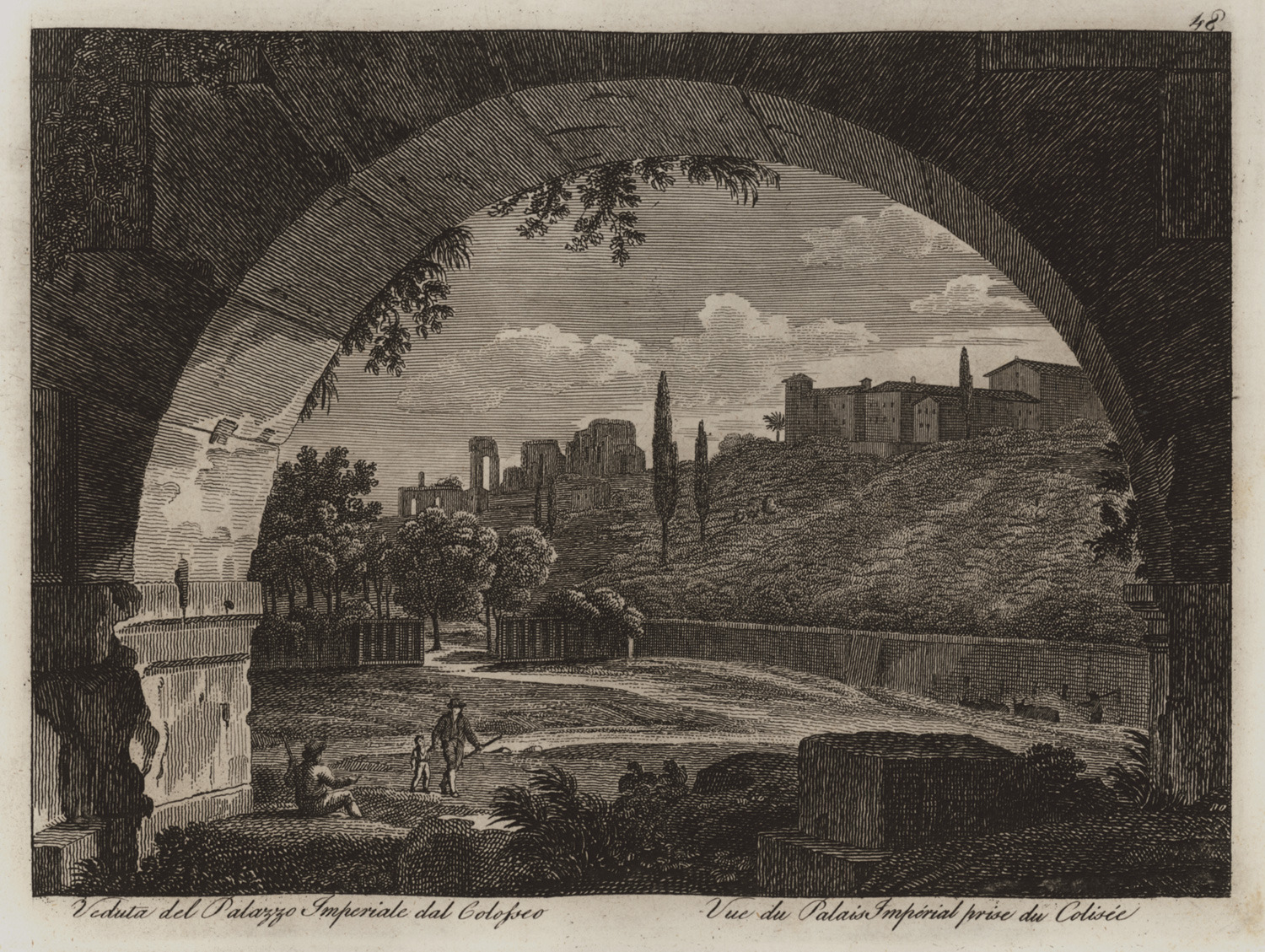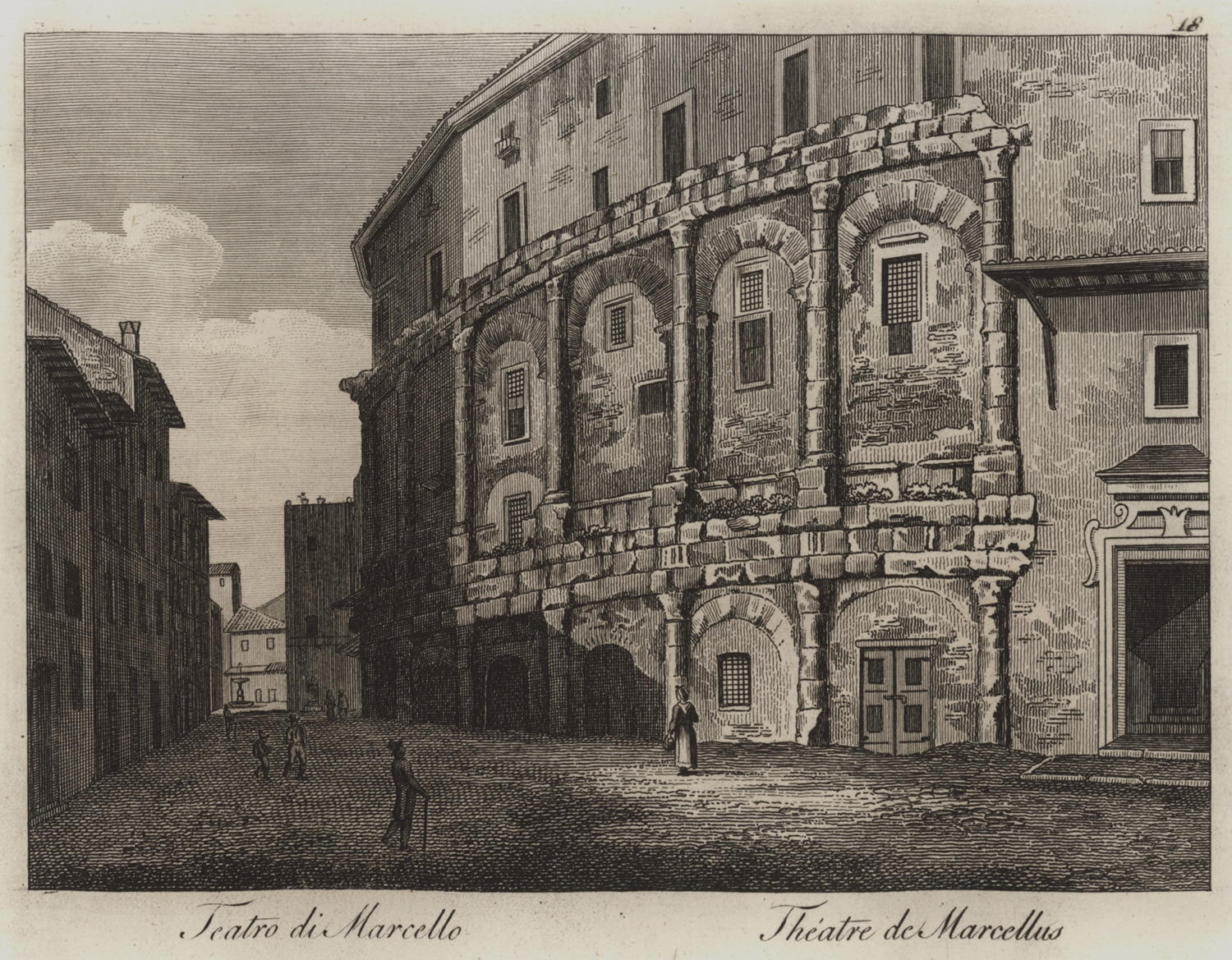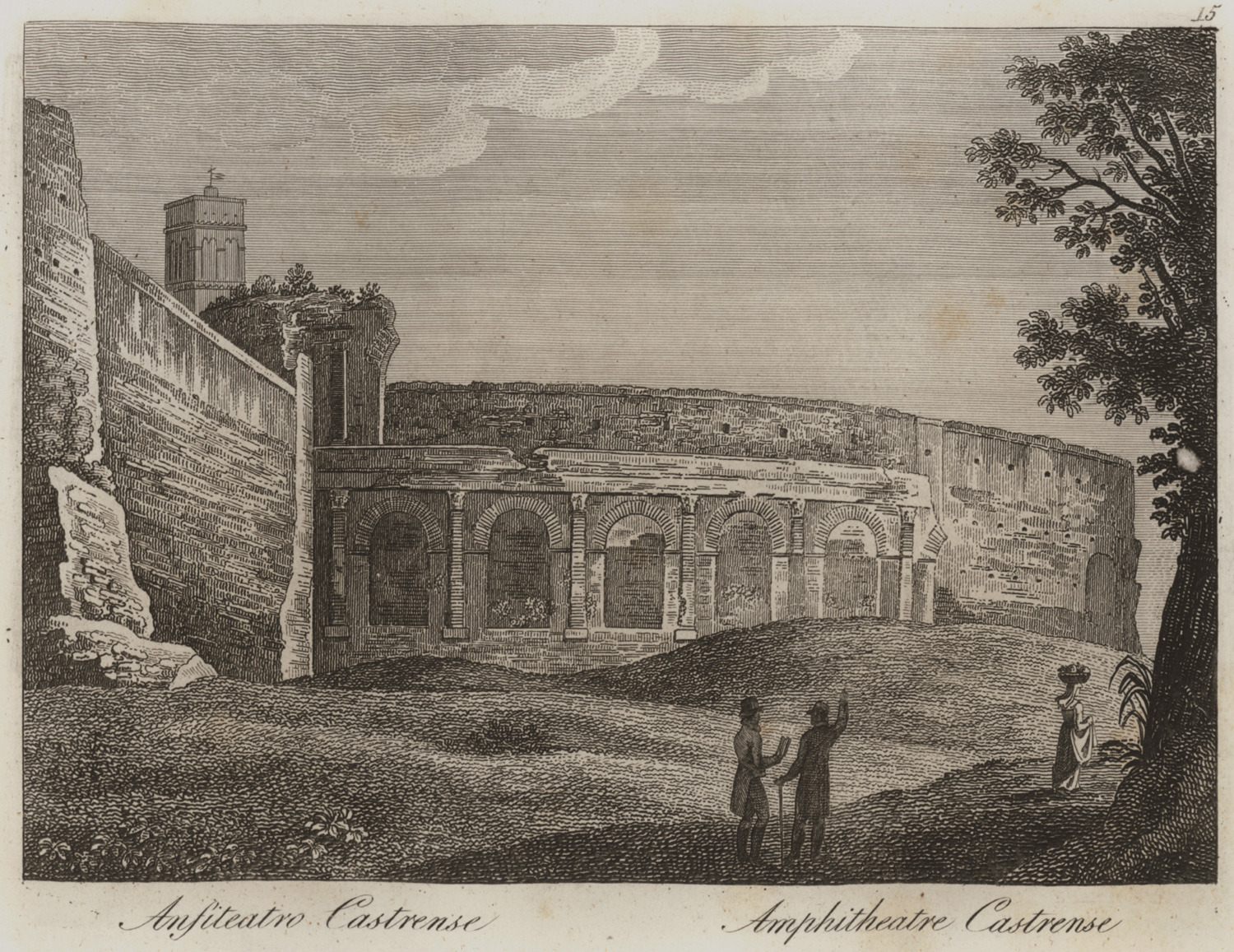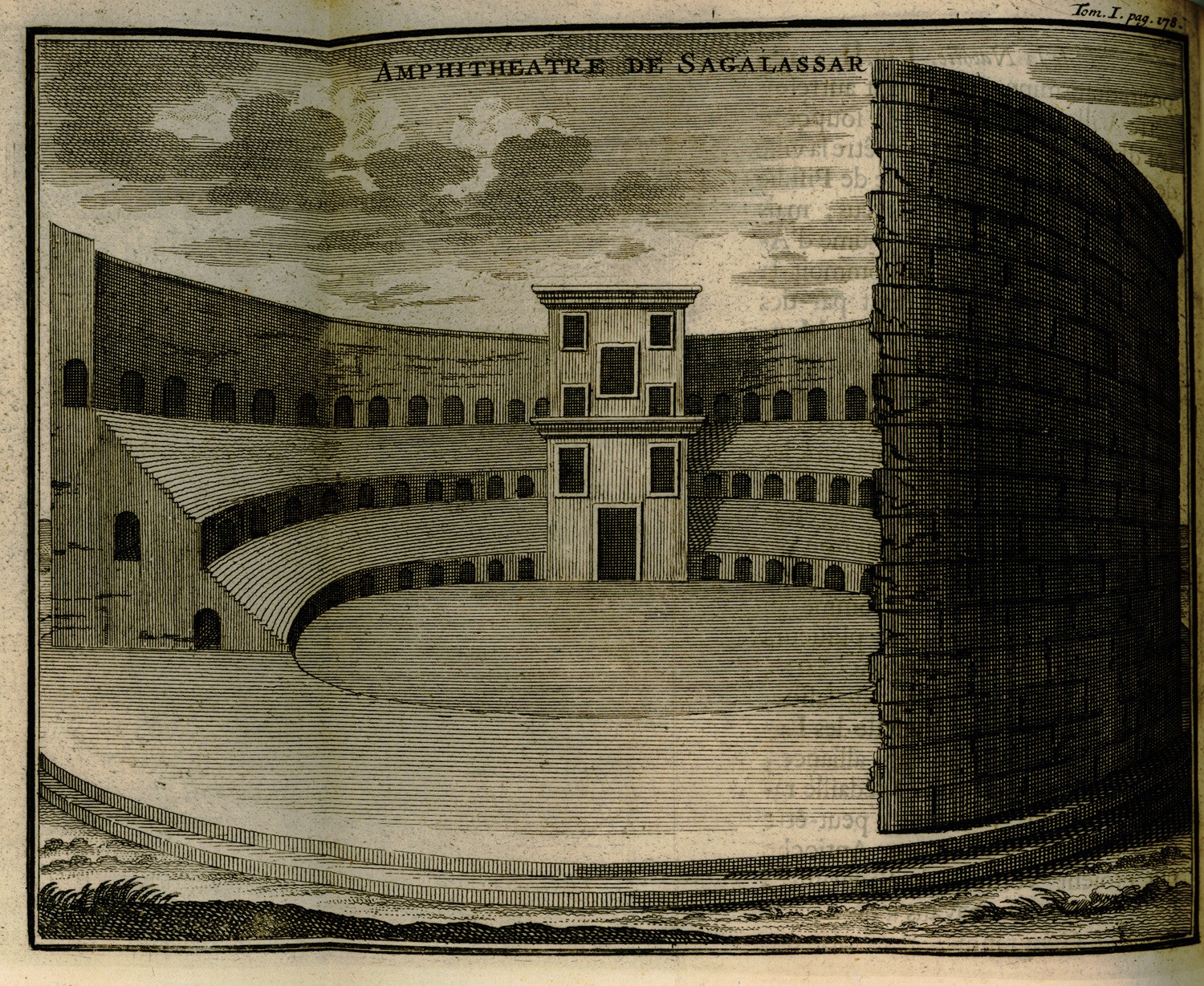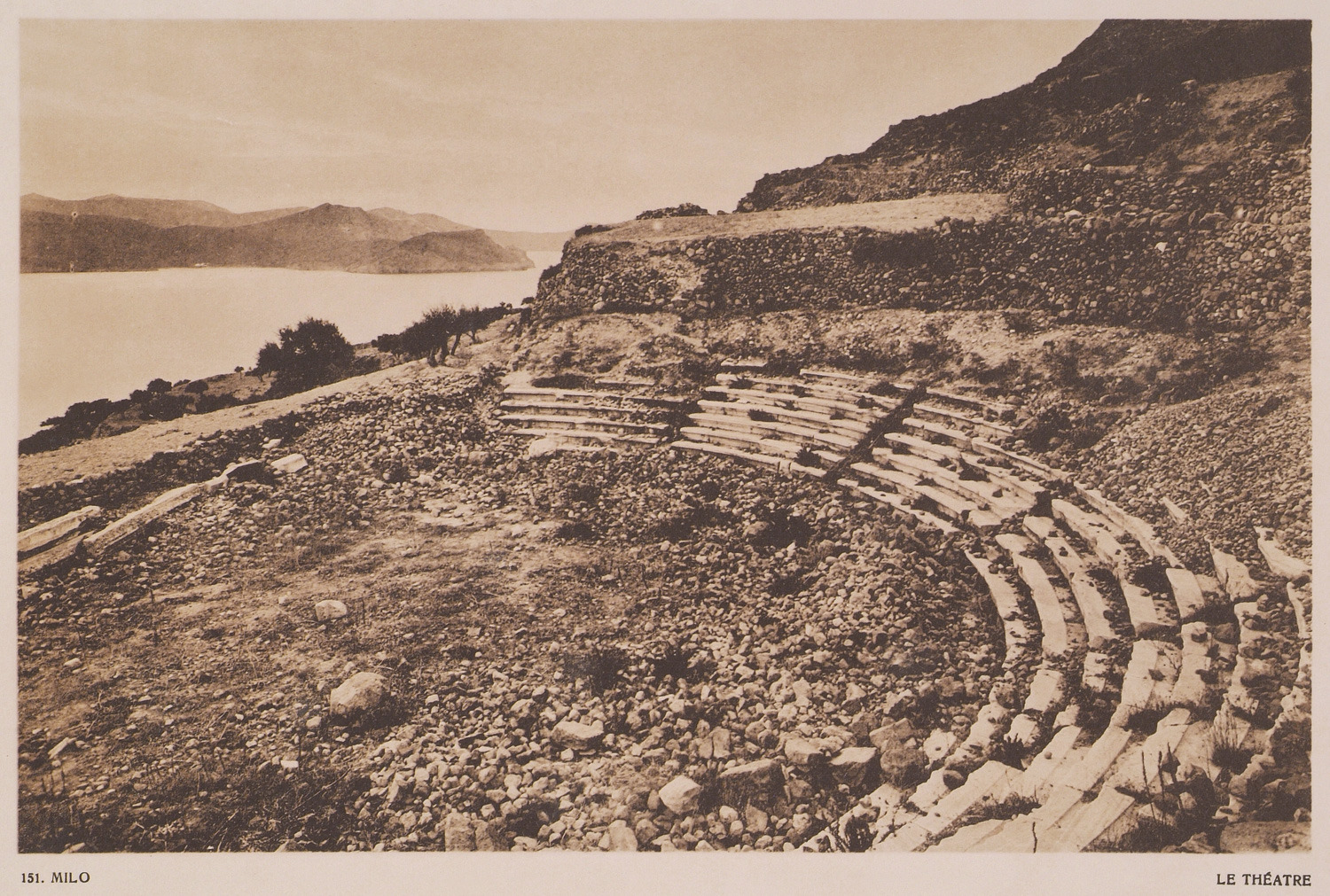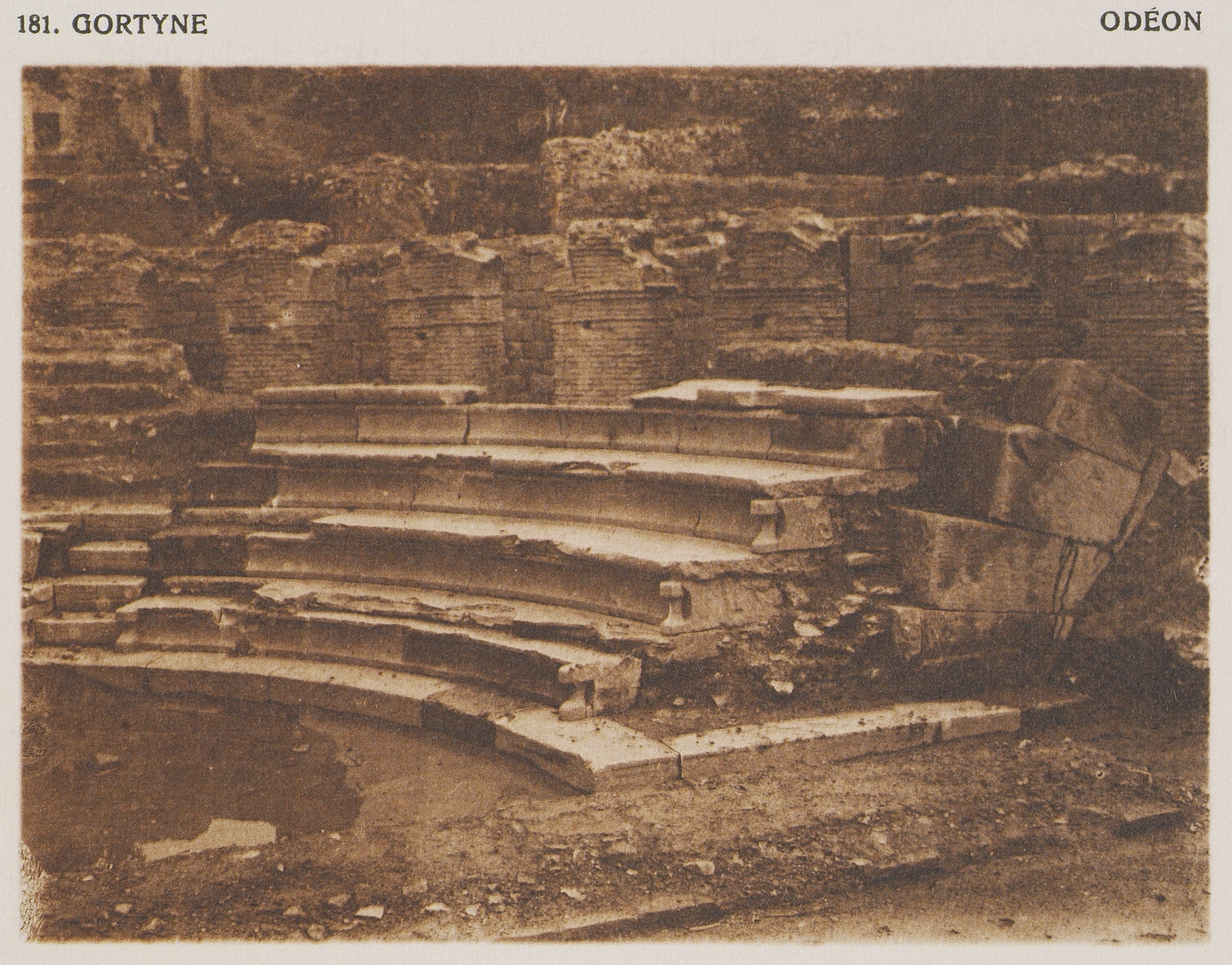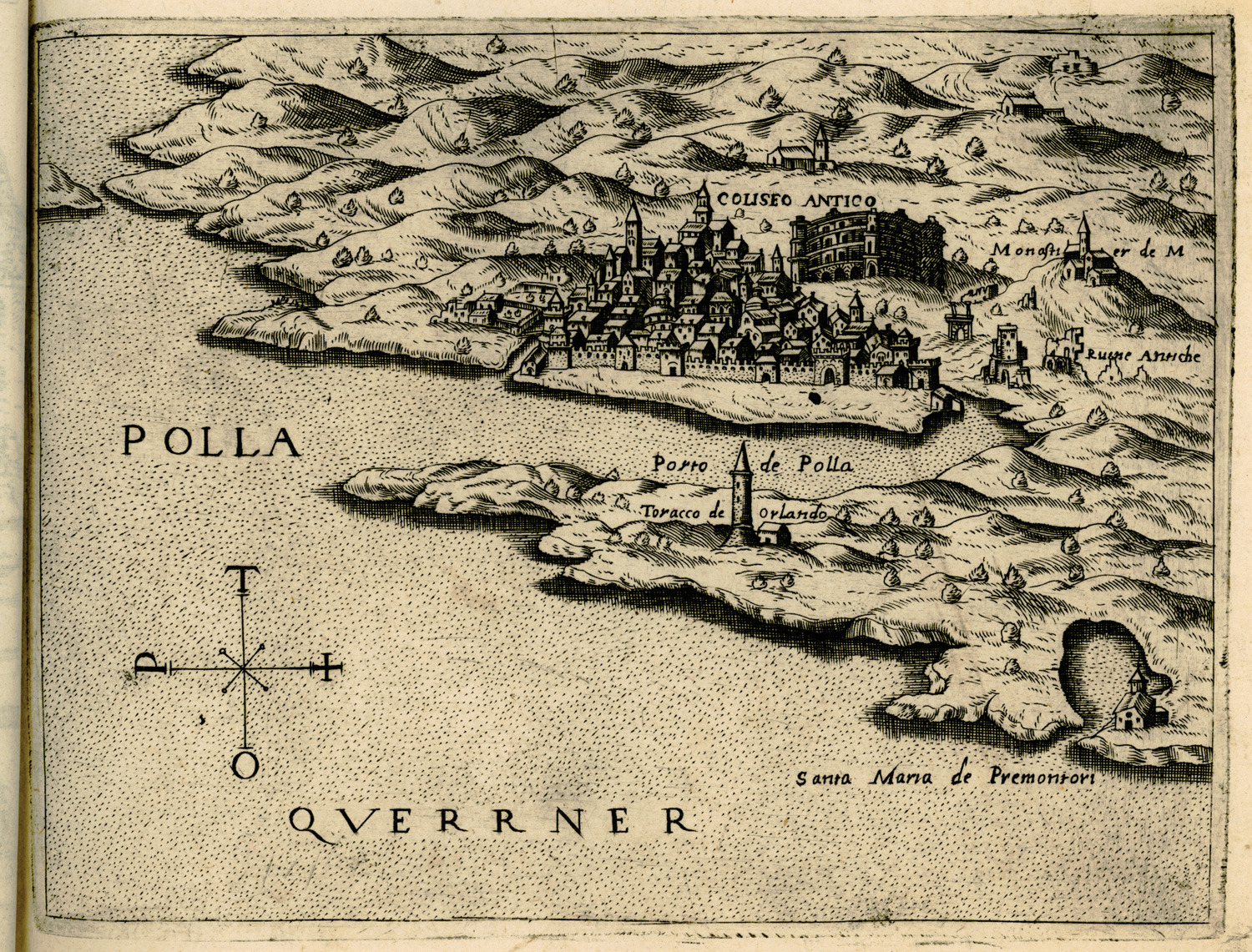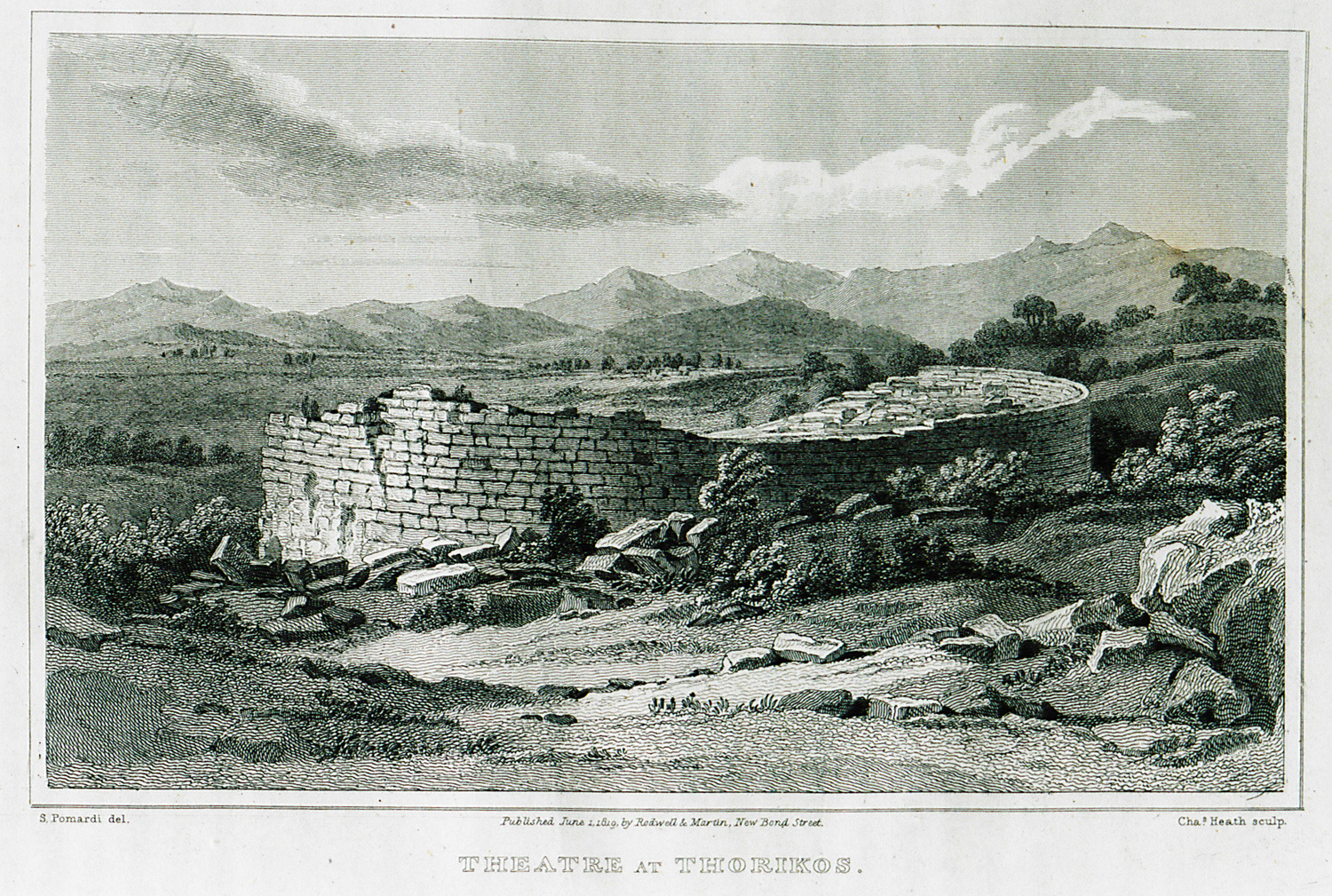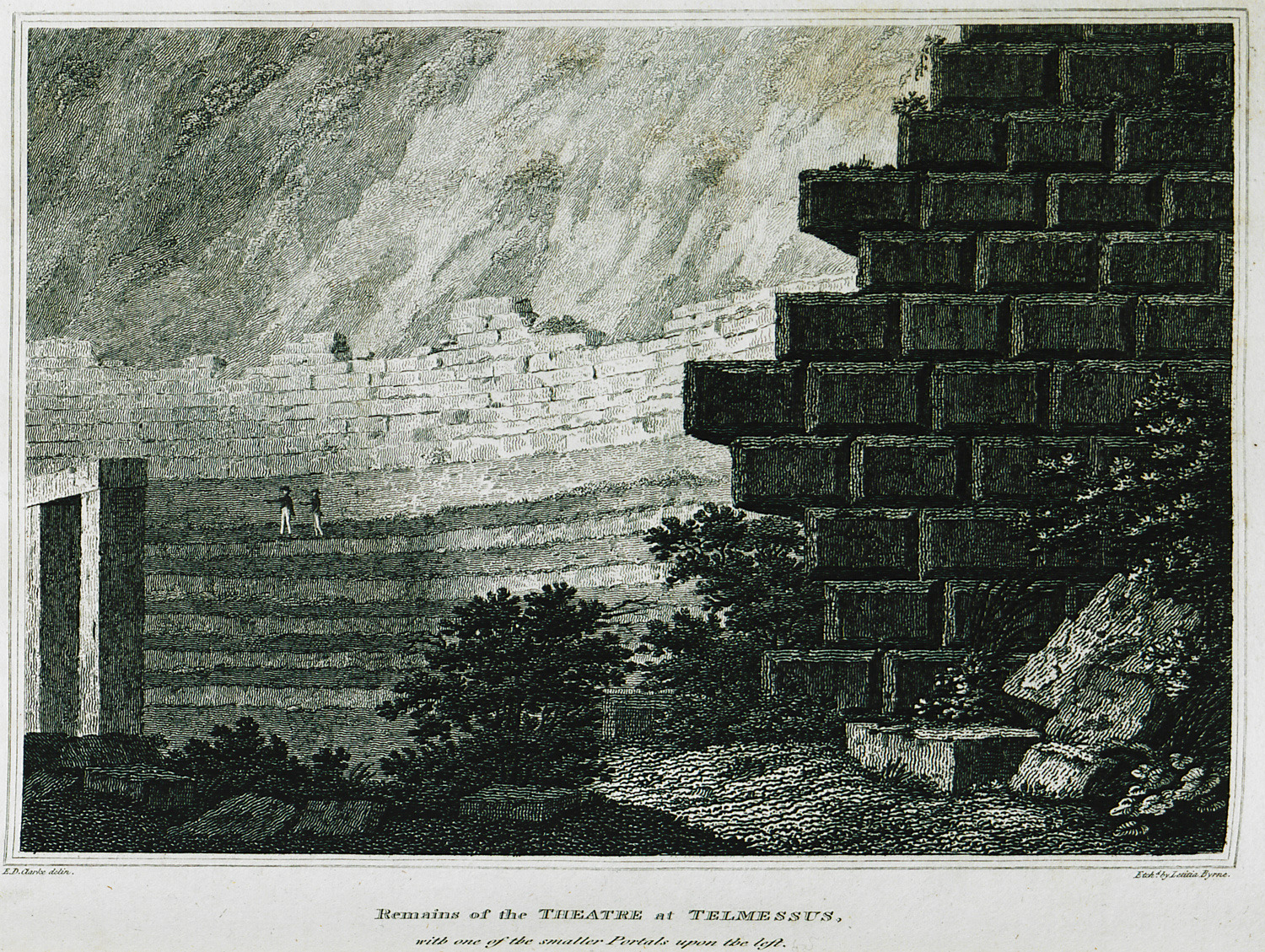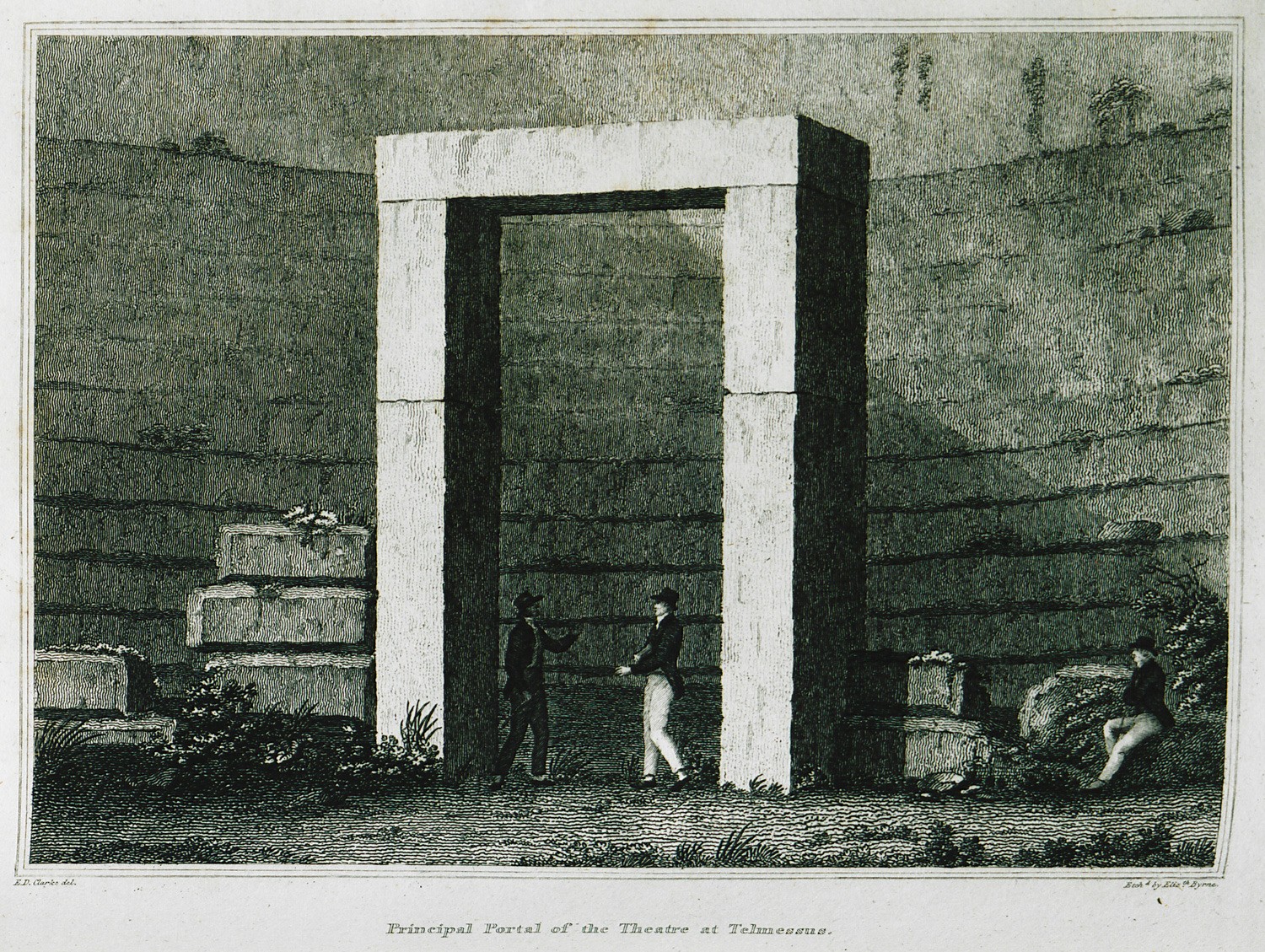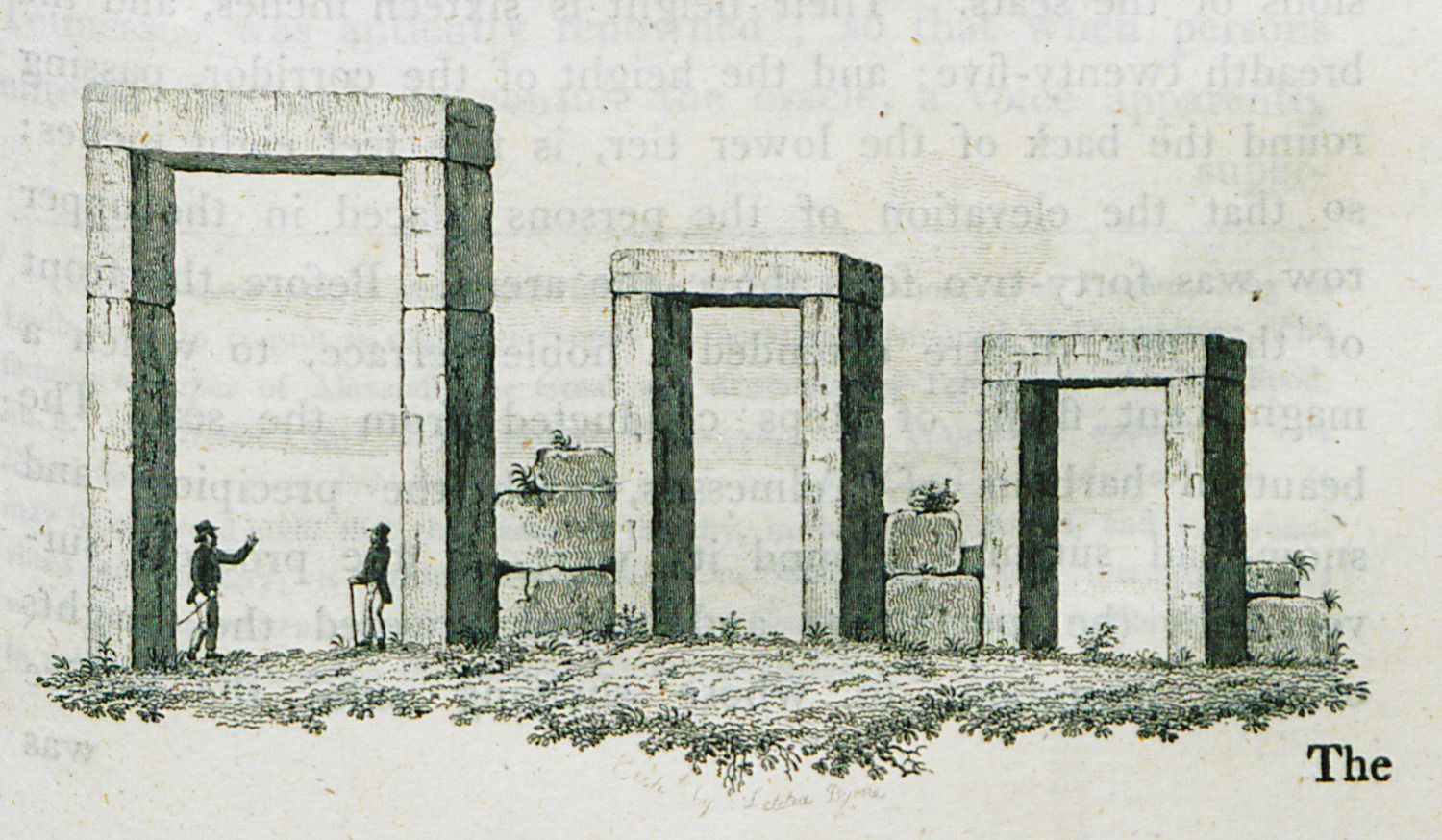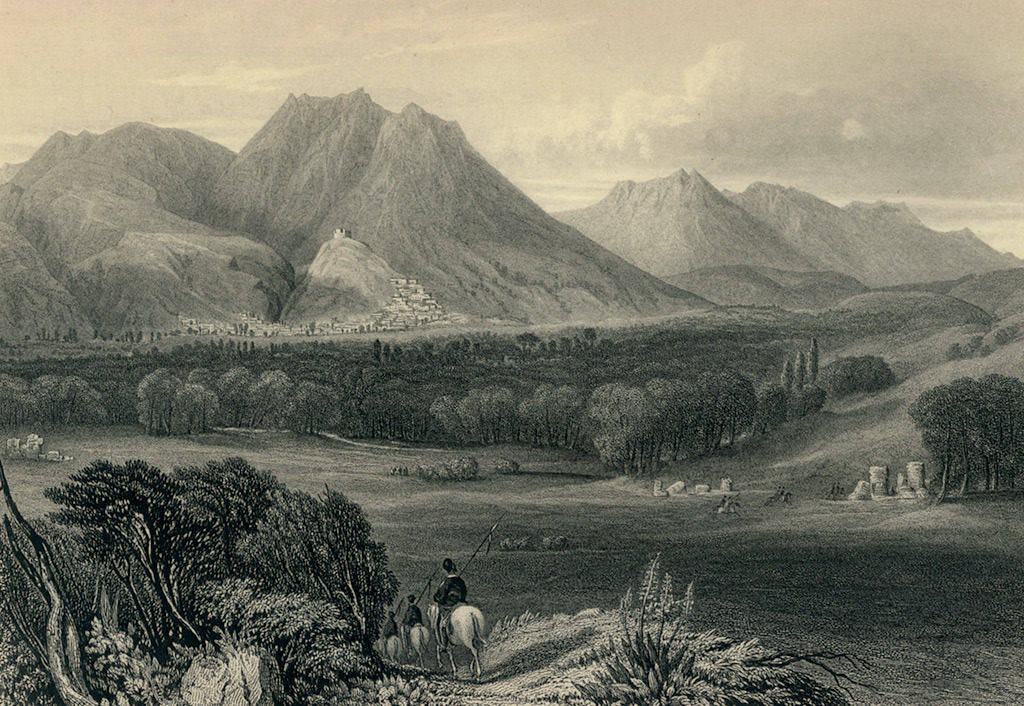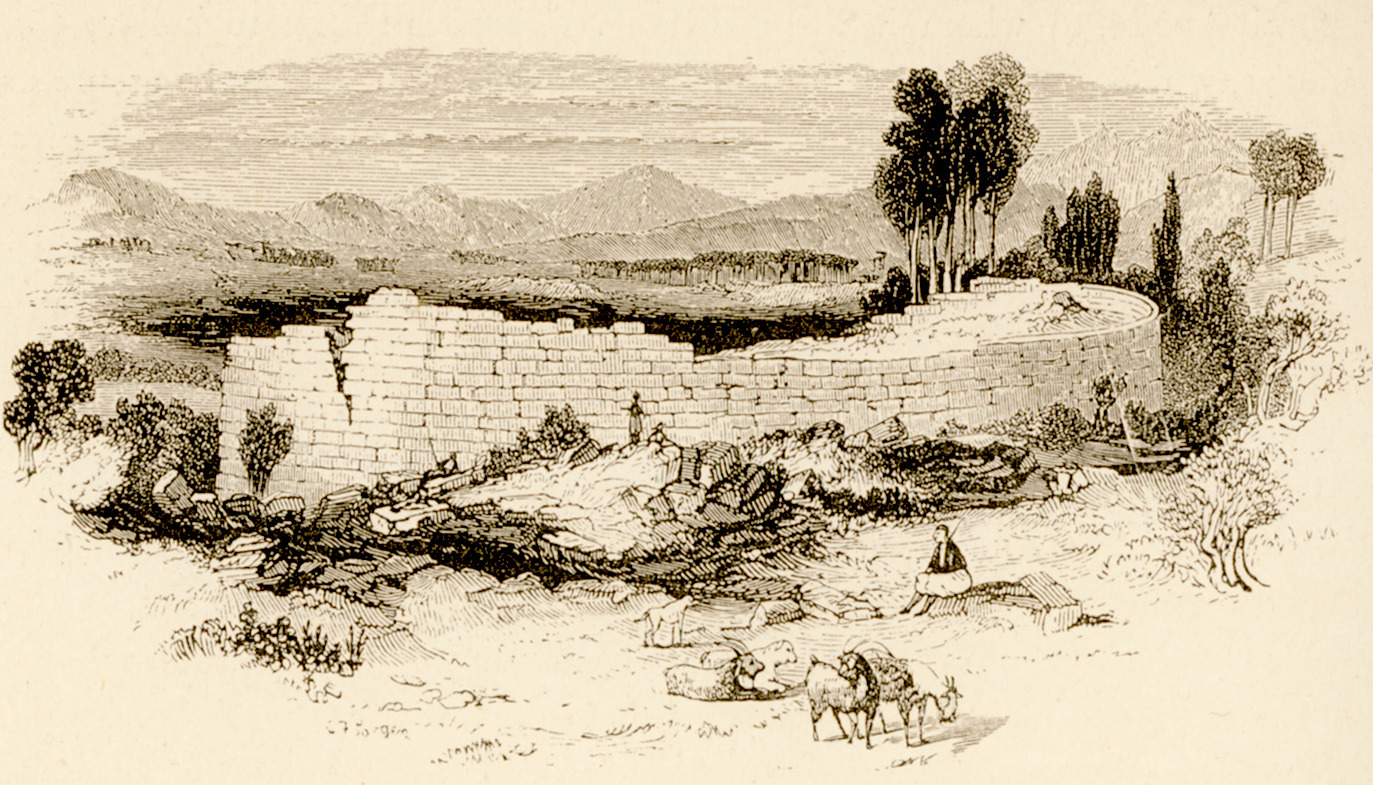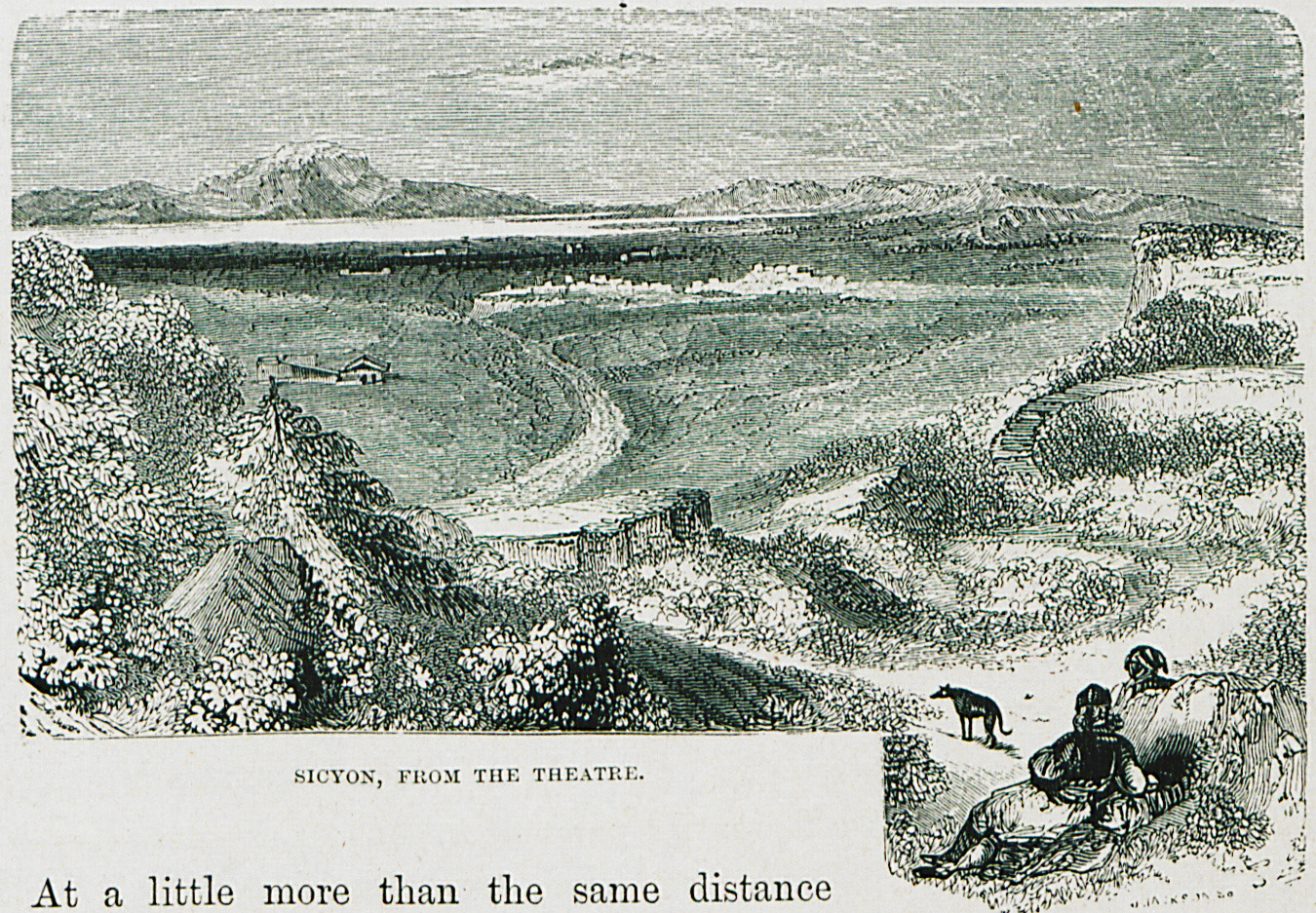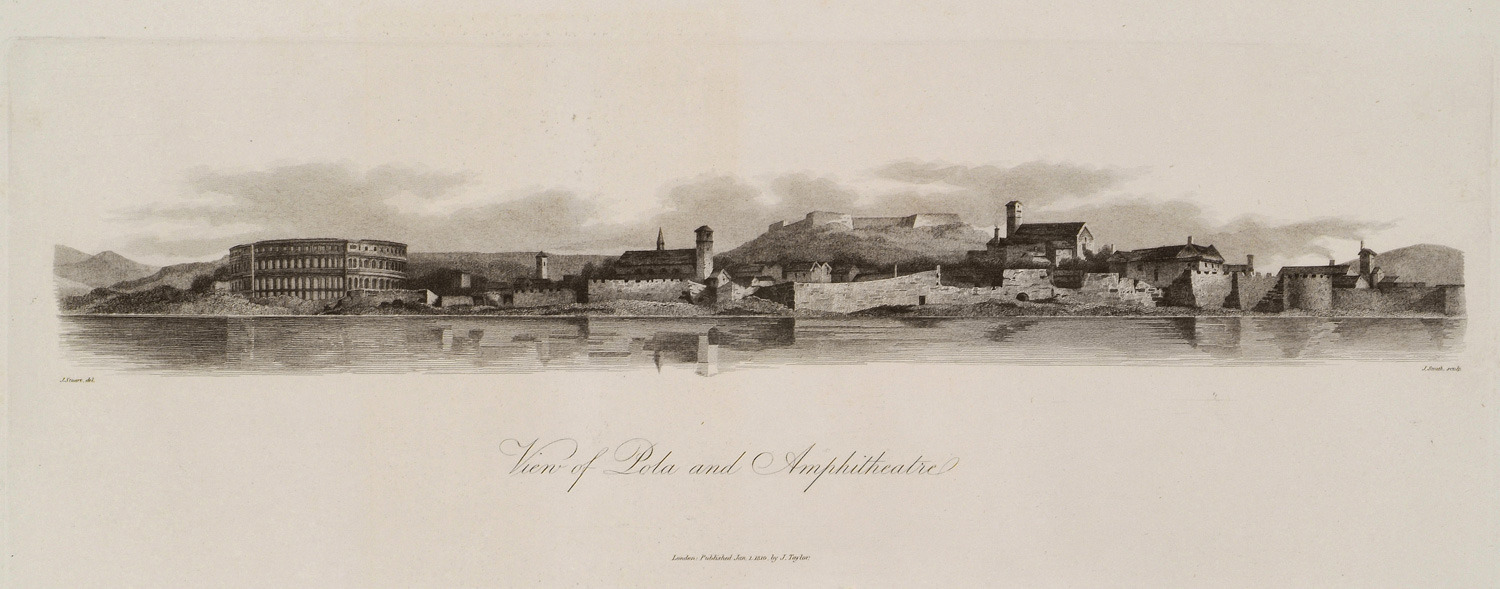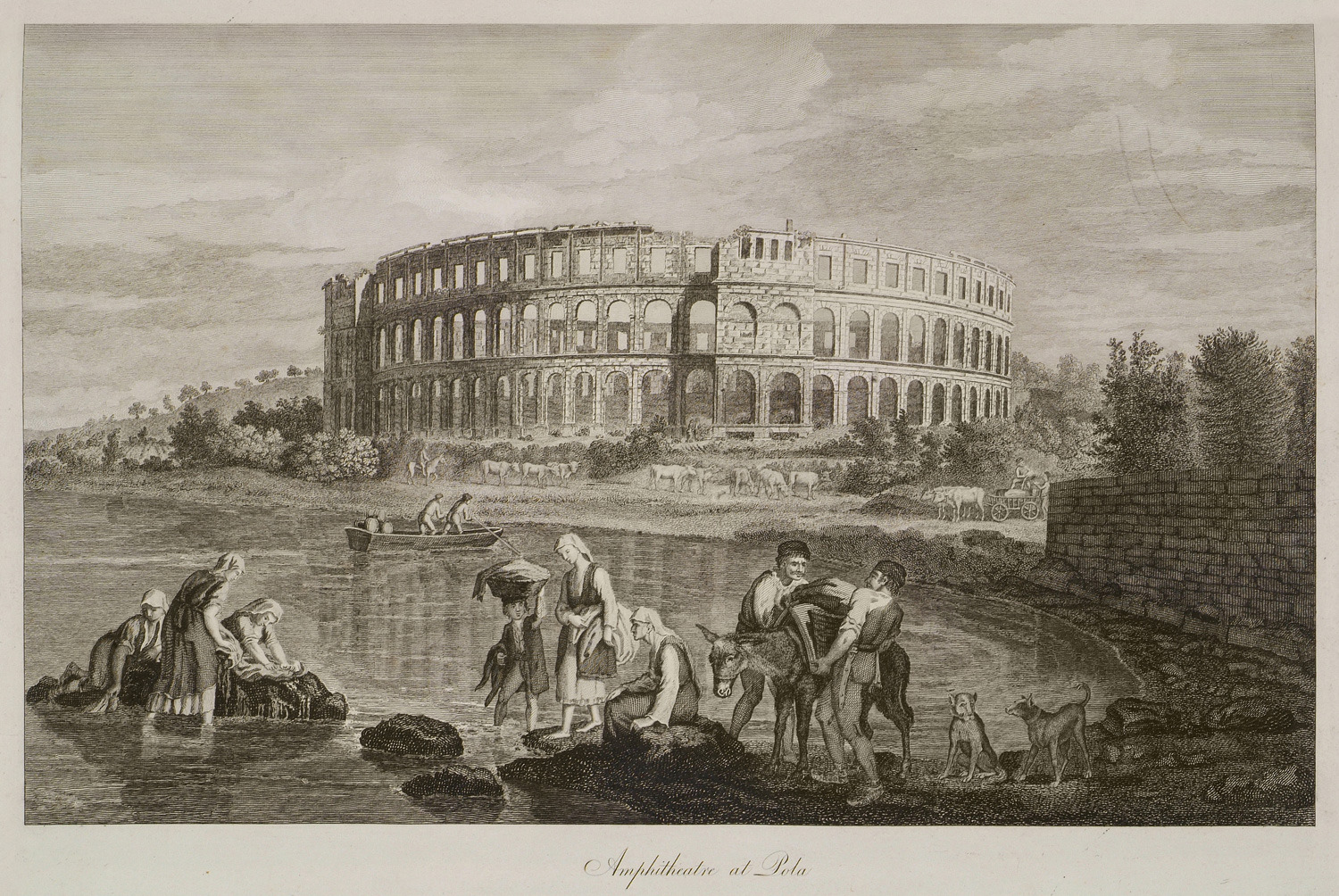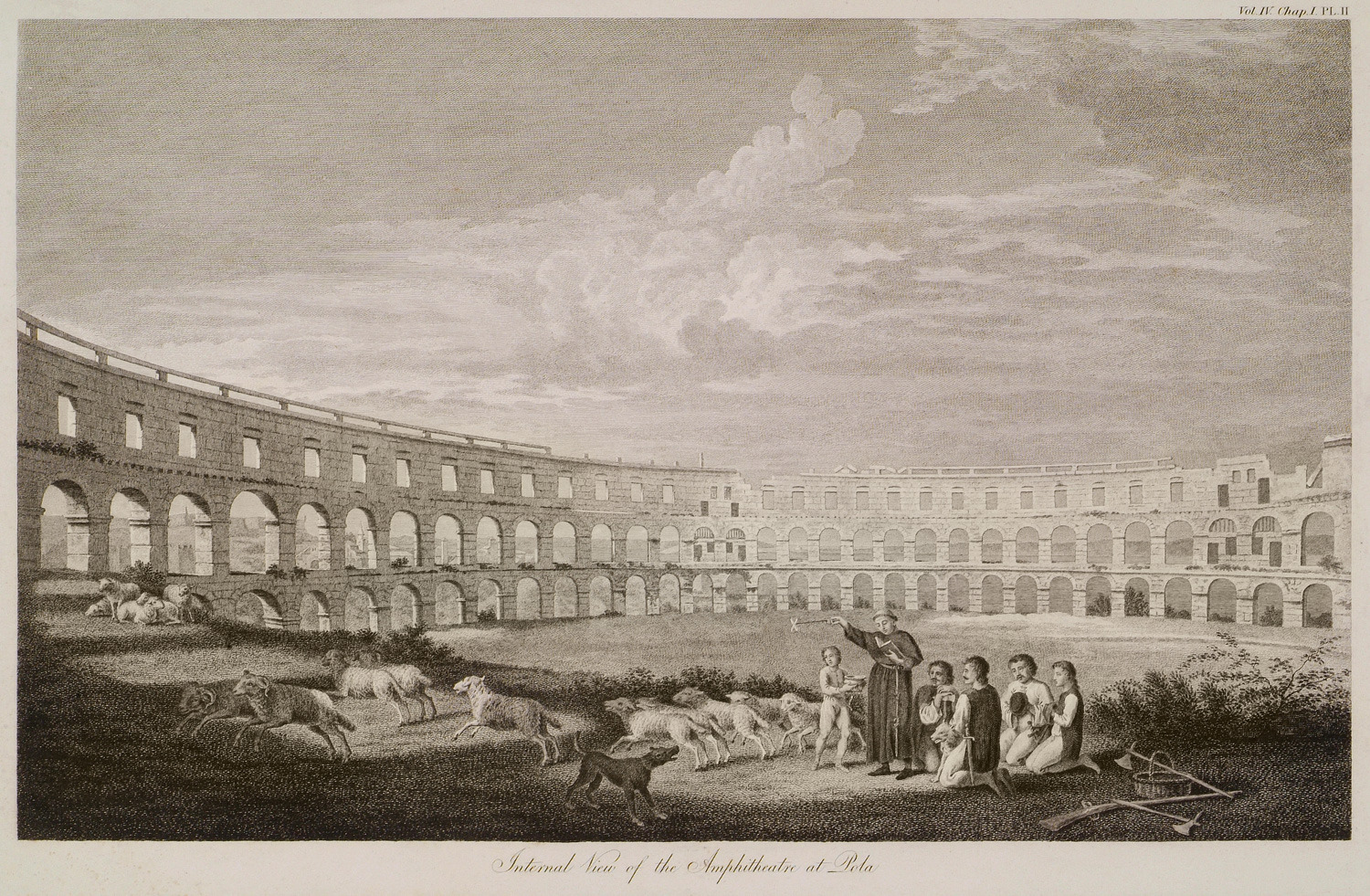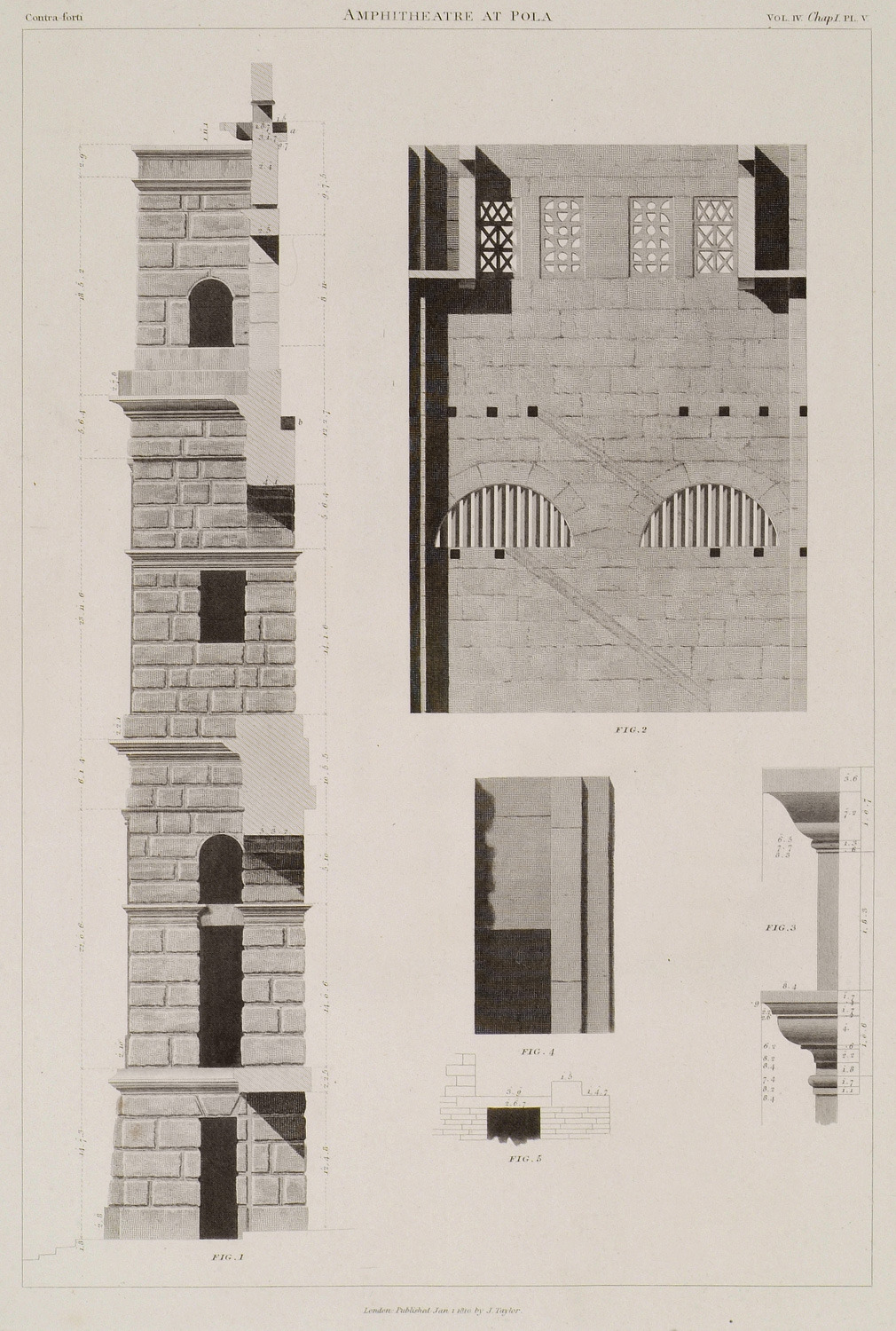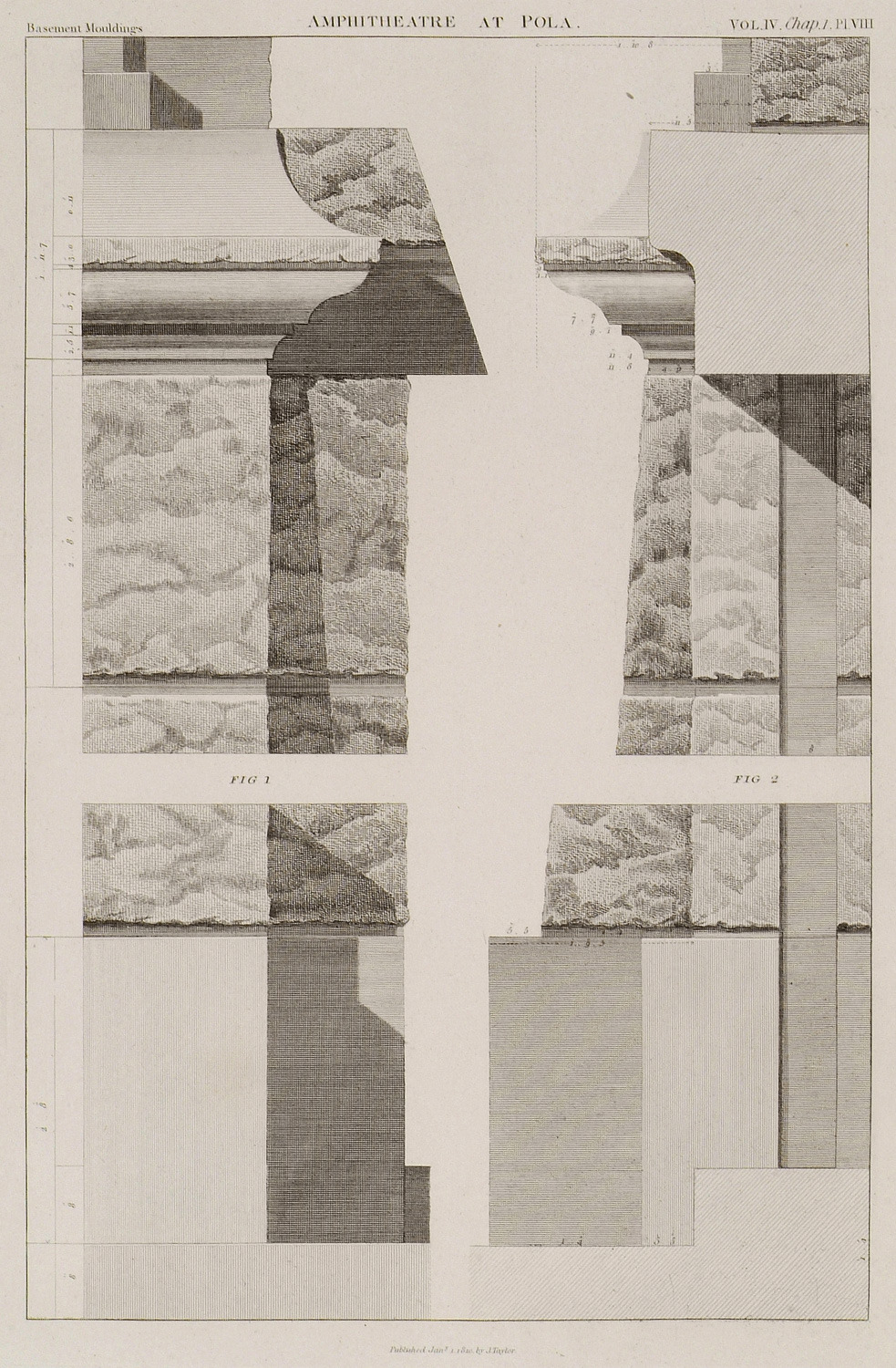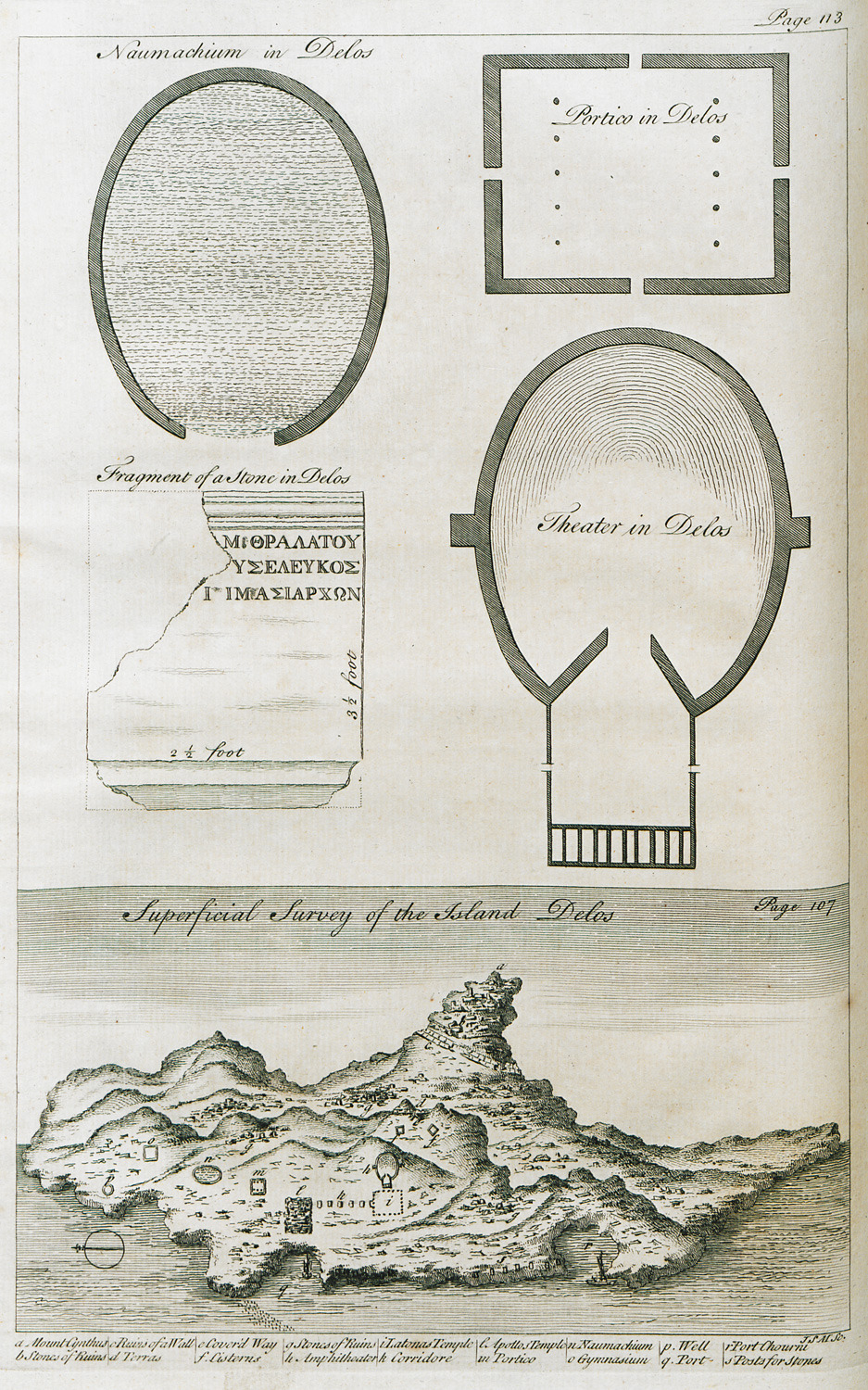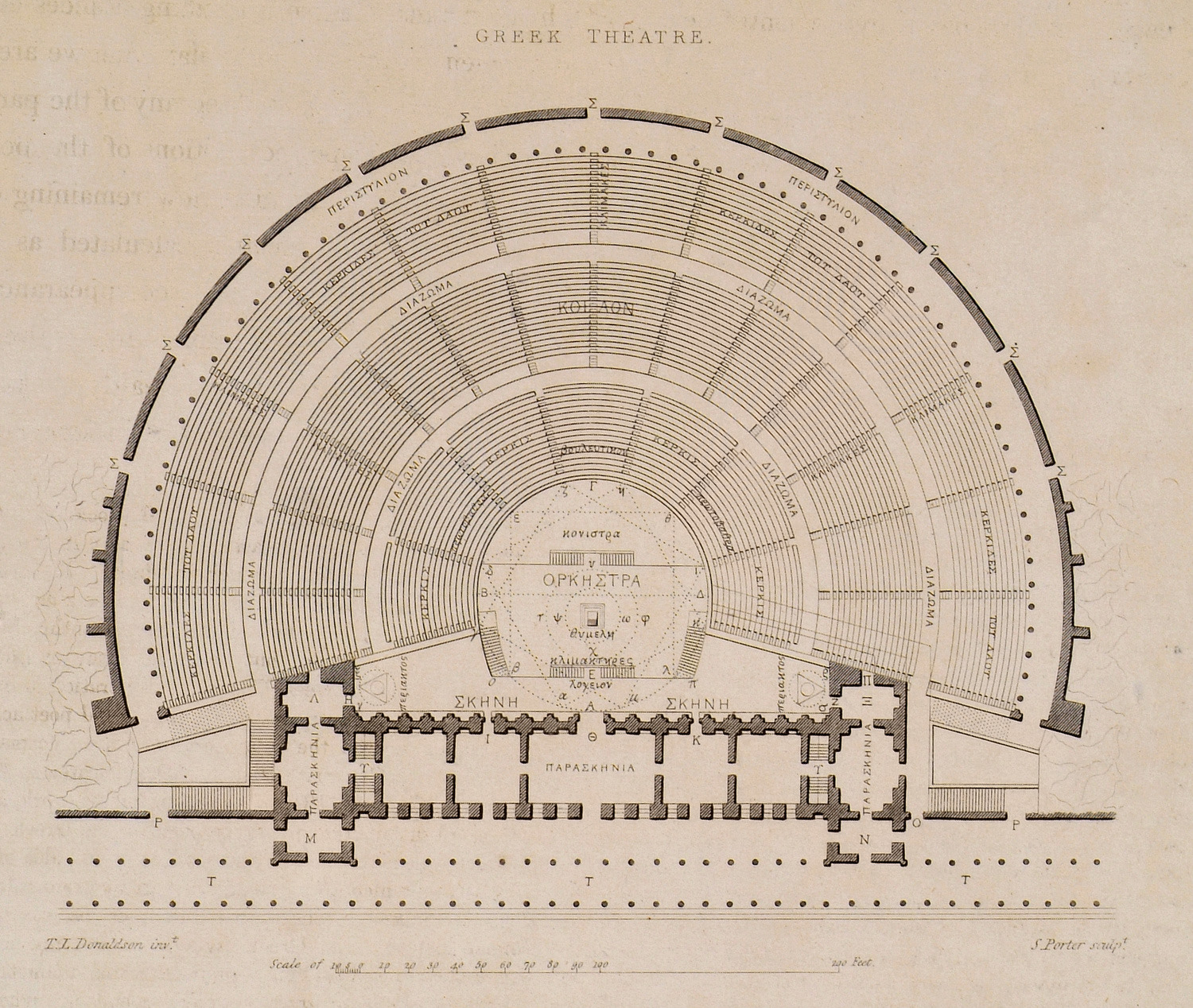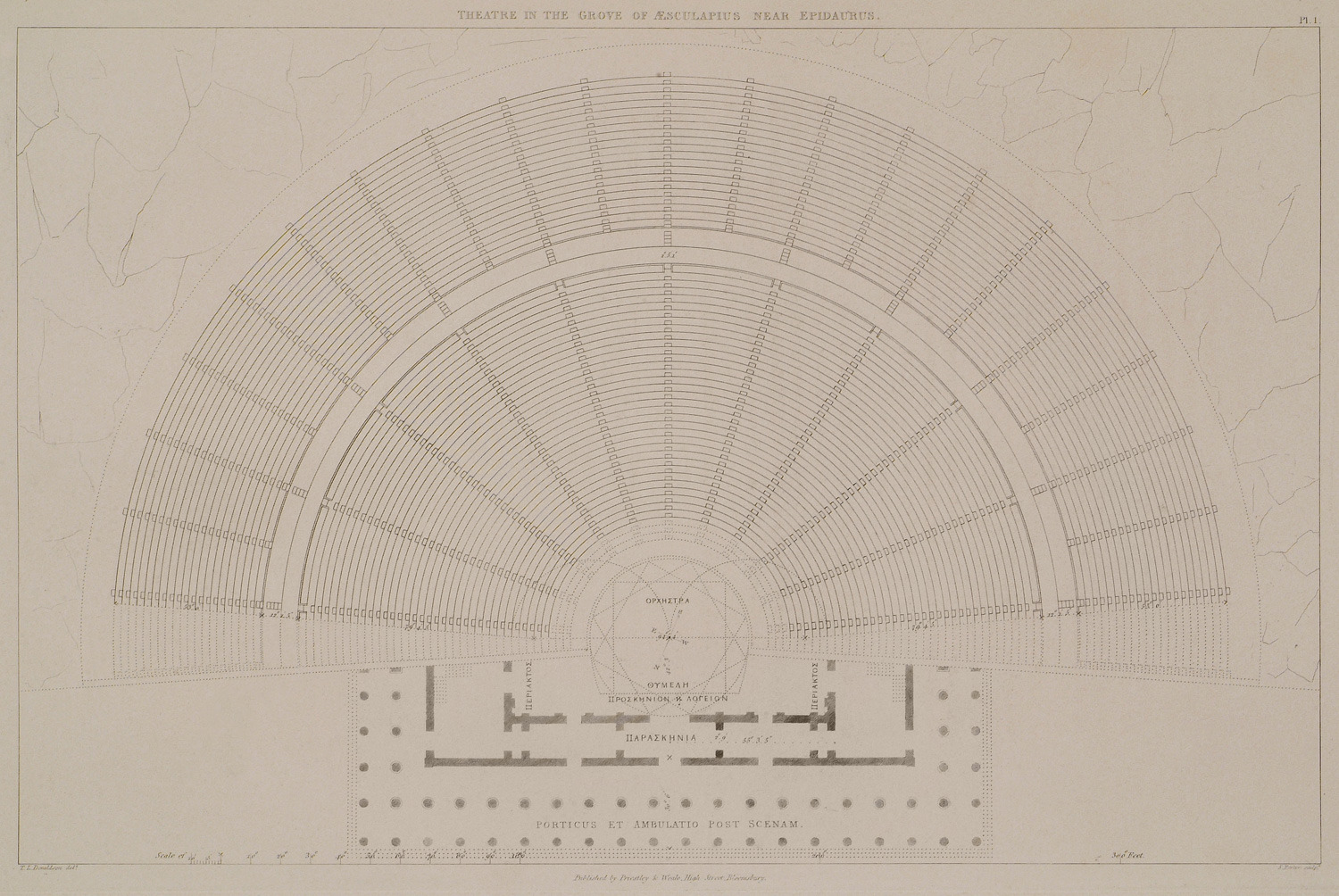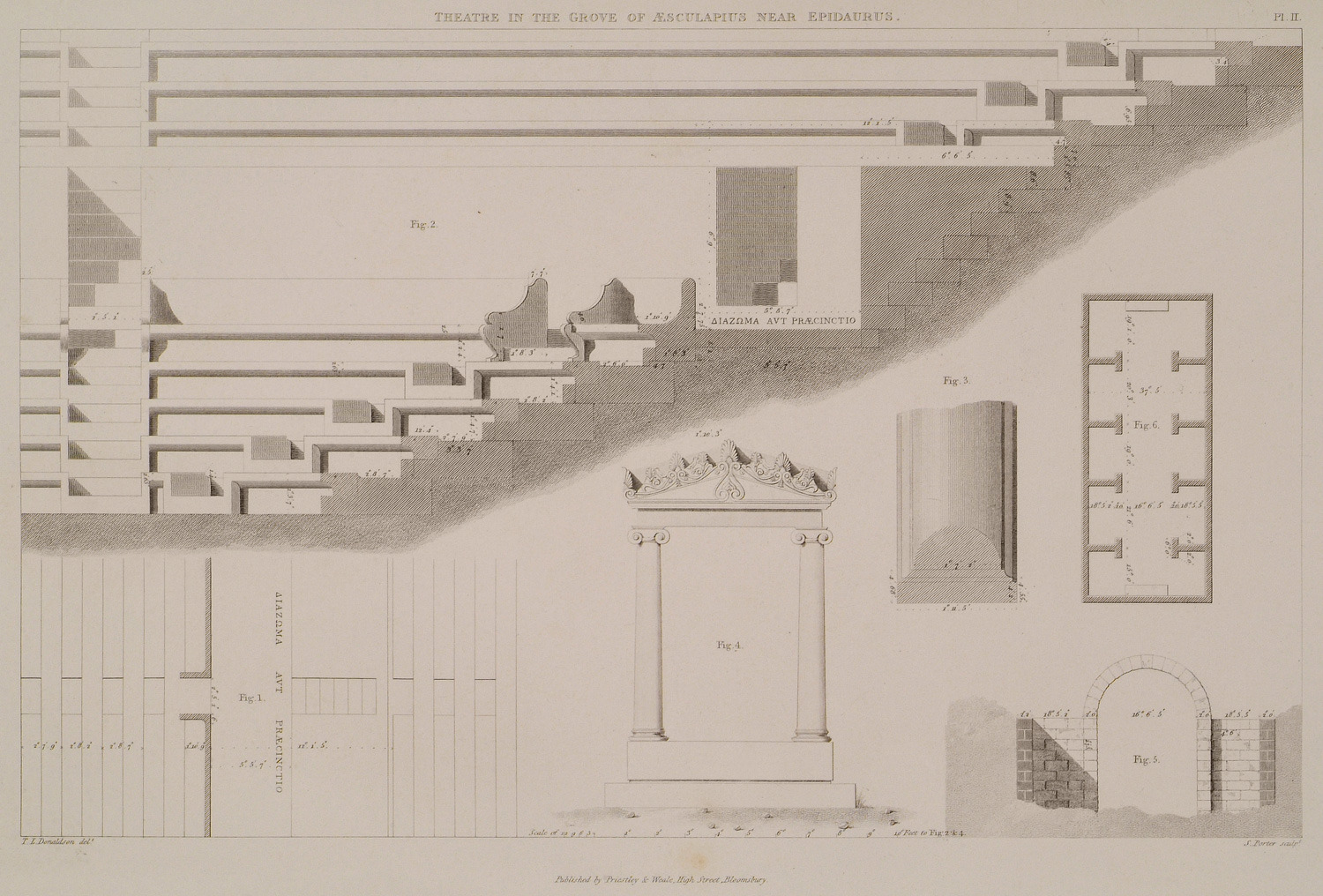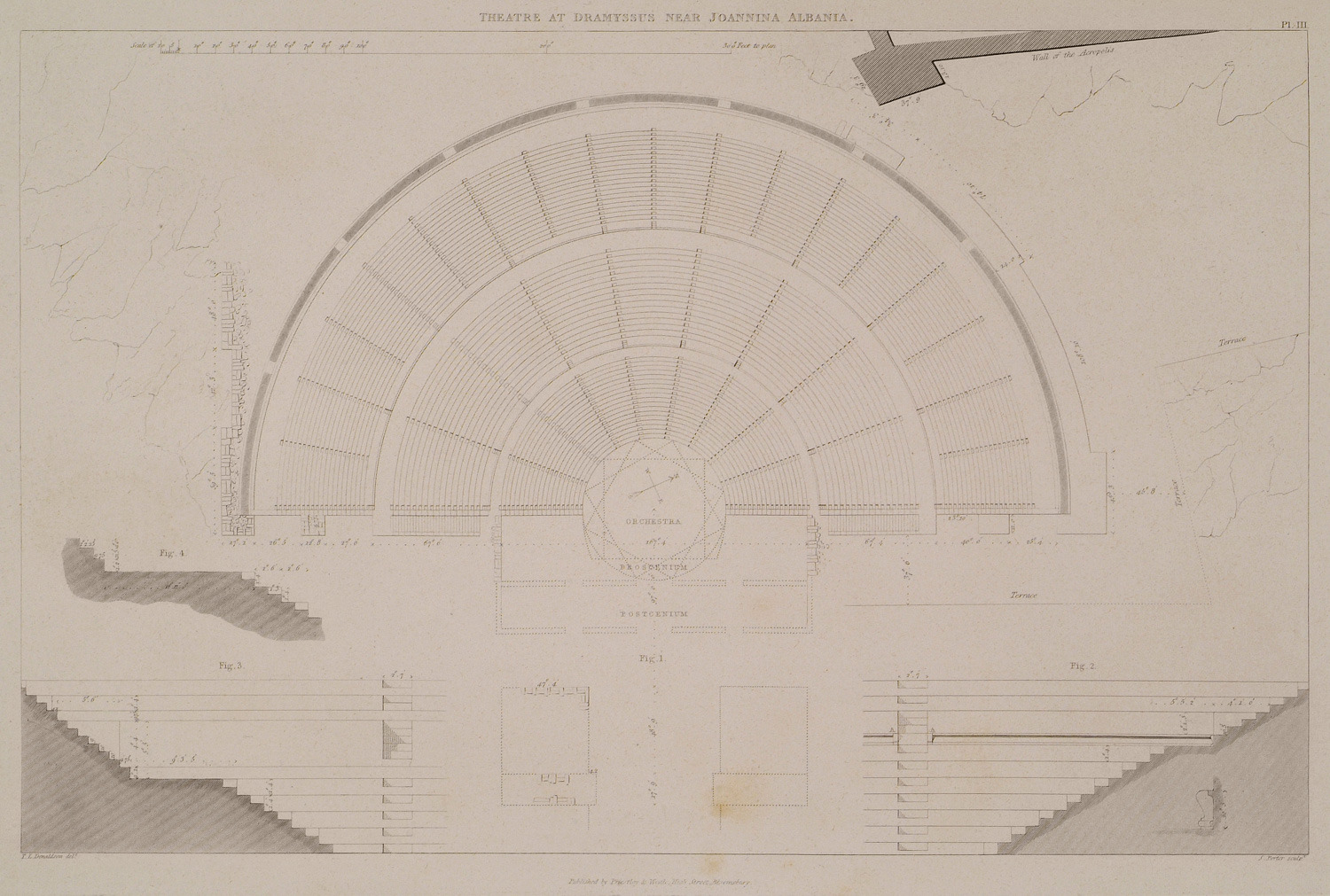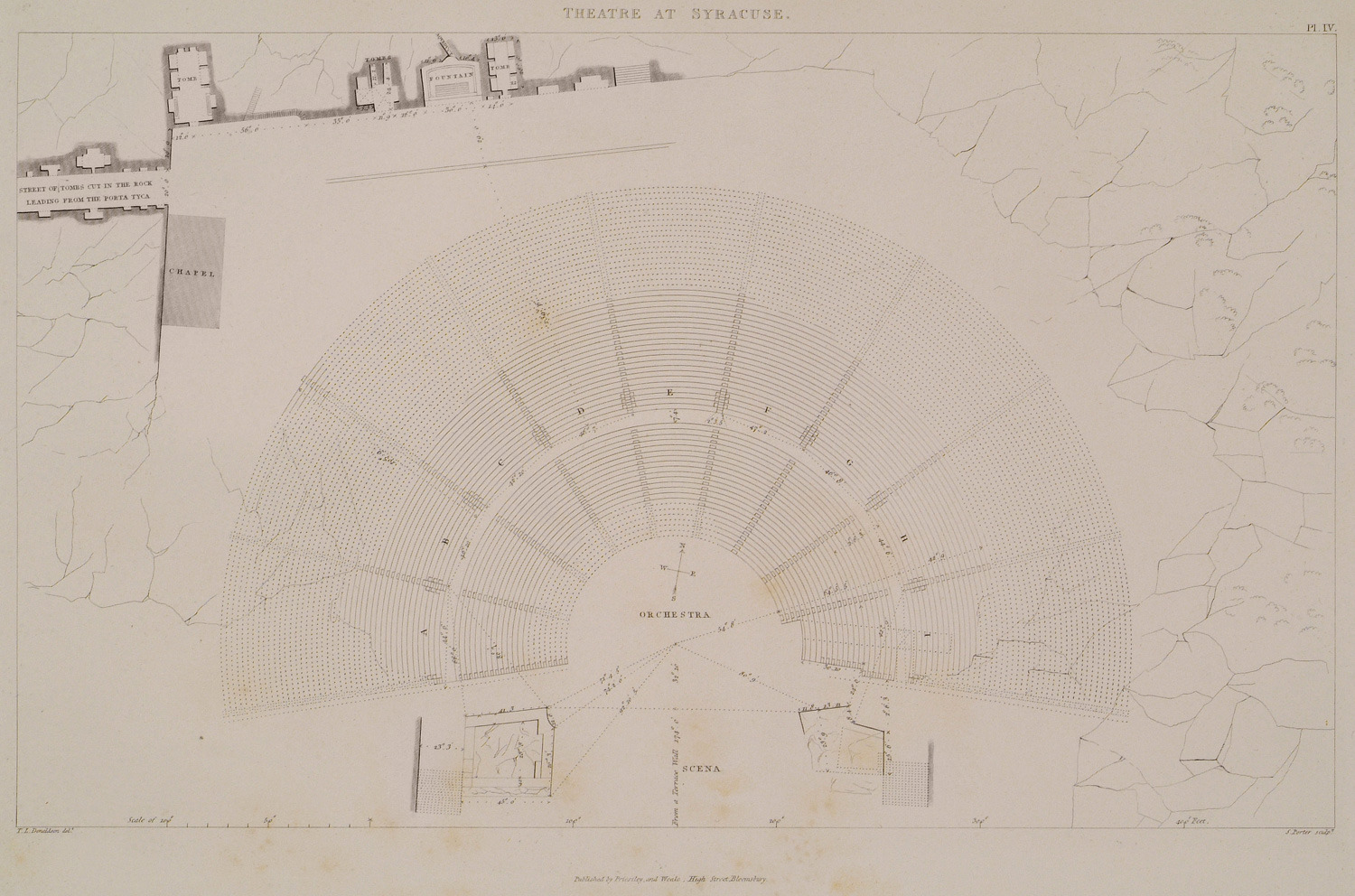Ancient theatres (177 Subjects)
Drawings of architectural features and reliefs from various monuments at Stratonice (today Eskihisar), Asia Minor.
Ancient theater in Alexandria Troas (Eski Stambul).
Alexandria Troas (today Eski Stambul): Plan of the port and the ancient theater. Antiquities.
The Colosseum or Flavian Amphitheatre of Rome.
Gallery in the Colosseum.
The Imperial Palaces of Rome seen from the Colosseum.
Theatre of Marcellus in Rome.
View of Amphitheatrum Castrense in Rome.
The ancient theater of Sagalassos.
The ancient theater of Milos.
The Odeon of ancient Gortyn.
Map of Pula.
The ancient theater of Thorikos, near Lavrio.
Remains of the Theatre at Telmessus (today Fethiye) with one of the smaller portals upon the left.
Principal portal of the Theatre at Telmessus (today Fethiye).
Plan of the portals of the Theatre at Telmessus (today Fethiye).
View of Mystras from the theatre of Sparta.
The ruins of the ancient theatre of Thoricus.
The remains of ancient Sicyon, from the ancient theatre.
View of Pula. On the left the Roman Amphitheater.
The Roman Amphitheatre of Pula from the west. Slovenian women are laundering their clothes in the sea. Inhabitants of the city come to take water or to water their animals at a gountain close to the amphitheatre.
Interior view of the Roman amphitheatre of Pula. Due to an epidemics among the livestock of the region, the consumption of lamb and mutton has been forbidden. Shepherds of Slavic ethnicity have sought refuge within the amphitheatre, with their herds. A monk of the order of Saint Anthony, patron of animals according to several traditions, is giving his blessing and sprinkling the sheep with holy water; this terrifies the flock and causes the dogs to bark at the monk. On the right, some weapons, which Slav inhabitants of the area always carry with them, according to the author.
Roman Amphitheater of Pula, Croatia: Fig. 1: Side elevation of the contraforte, with a section of the wall of the amphitheatre. Fig.2: Longitudinal section of the upper part of the contraforte: marks of the line of steps are still visible.[...] Fig. 3: External mouldings at the summit of the contraforte. Fig. 4: Plan and Fig. 5: Section of the walls immediately surrounding the arena. These walls form what is called the podium in the description of the plan.
Roman Amphitheater of Pula, Croatia: Mouldings of the Basement Story. Fig. 1: Elevation. Fig. 2: Section.
1. View of the Palestra of Delos. 2. Portico at Delos. 3. Fragment from Delos. 4. The ancient theater of Delos. 5. View of Delos.
Plan of ancient theater.
Ancient theatre of Epidaurus: Plan.
Ancient theatre of Epidaurus: Theatre in the grove of Aesculapius near Epidaurus. Fig. 1: Plan of the diazoma. Fig. 2: Elevation and section of the diazoma and some of the seats above and below it [...] Fig. 3: The coping to the diverging enclosure wall of the coilon, which followed the inclined line of the wall. Fig. 4: Application of a fragment found within the sacred precinct. The parts restored are the plinths, columns and architrave; the cornice and pedimental ornament are of one piece of marble beautifully sculptured in low relief, and now much destroyed. Fig. 5 and 6: Plan and section of a reservoir or fountain, built of fine large blocks of stone covered with a thick and strong cement.
Ancient theatre of Dodoni: Fig. 1: Plan of the Theatre. Fig. 2: Elevation and section of the lower diazoma; the section in the corner shews more at large the profile of the small detail AA in the elevation. Fig. 3: Elevation and section of the upper diazoma. Fig. 4: Section through the uppermost corridor.
Plan of the ancient theater at Syracuse, Sicily.


